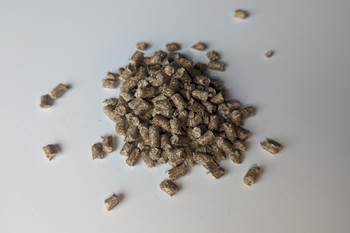Search Results
Showing 41 – 50 of 5628 results
Additive manufacturing, commonly known as 3D printing, has revolutionized composite production by enabling the layer-by-layer construction of intricate composite structures. In the realm of composites, additive manufacturing techniques allow for the creation of complex geometries with precise fiber orientations and resin distribution, optimizing material performance. This technology offers the flexibility to customize parts, reduce waste, and experiment with novel composite combinations. By depositing materials layer upon layer, additive manufacturing facilitates the production of lightweight, high-strength components tailored for specific applications in industries such as aerospace, automotive, and healthcare, pushing the boundaries of what's achievable in composite design and fabrication.
Processes in composites manufacturing encompass a diverse array of techniques employed to fabricate composite materials. These processes include methods like hand layup, where layers of resin and reinforcement materials are manually placed, and vacuum infusion, where a vacuum draws resin into a preform. Other techniques like compression molding, filament winding, and automated methods such as 3D printing are utilized to create intricate and specialized composite structures. Each process offers unique advantages in terms of precision, scalability, and efficiency, catering to diverse industry needs. As technology advances, newer methods are emerging, promising faster production cycles, reduced waste, and increased customization, driving the evolution of composite manufacturing towards more sophisticated and versatile methodologies.
Additive targeting enhanced composite material strength is to undergo performance testing, collaborative deployment for COPVs.
GA-ASI demonstrates a path forward for the use of additive technologies for composite tooling, flight-qualified parts.
Additional five years of collaboration will continue to focus on the extensive use of Roboze’s 3D printing technology for lightweight composite components.
Make sure to brush up on the diverse lineup of exhibitors that will be present at CAMX 2025 to build valuable insights, connections and strategies.
Larger presses with platen sizes up to 10 × 10 feet and 1800°F operating temps service increasing component size, complexity and material diversity in composites manufacturing.
Raising of additional $4.2 million will support 700-bar tank design qualifications, USDOT Special Permit process, pilot plant production and R&D team extension.
Addition of RTM work cell at South Carolina facility enhances customer support in aerospace, defense industries.
Olea FP brand transforms olive oil byproducts into high-quality powders with optimal performance that act as fillers and additives for composite applications.
The Michigan company, producing hemp-based natural fiber materials, is the latest addition to Chemovator’s program supporting early stage startups in the chemical industry.
Mel is supplying its composite materials and equipment package, in addition to technical assistance, for the new 15.2-meter defense craft.










